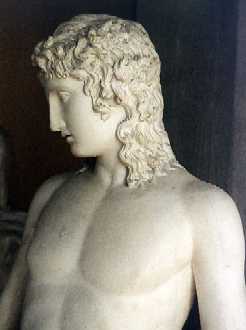

The goddess of love gets kind of hateful and orders her son, Cupid (a.k.a.We bet you can guess who got mad about this.Men even start saying that Psyche is more beautiful than Venus.All this adoration of Psyche gets totally out of hand men start worshiping her as if she were a goddess and ignore the altars of the goddess of love and beauty, Venus (a.k.a.People come from all around just to check out how beautiful Psyche is.All three of the girls are attractive, but one of them is absolutely gorgeous – Psyche.However – and this is linked again to textuality – these sources almost always call for the performance of vision through liturgical or scriptural acts of recitation. Related to this is how, like many Greco-Roman and Christian writings, these rabbinic sources thematize sight. The article reads these rabbinic itineraries not as sources through which to reconstruct a history of actual travel, but rather as mediations and techniques in and of themselves, through which the past was made visible. Furthermore, like Christian and Greco-Roman pilgrimage writings, these rabbinic itineraries seek to visualize the past (and sometimes the future) in the landscape. Secondly, it shows that aside from the expected melancholic post-Temple itinerary, there exist itineraries for Babylon and for biblical conquest that do a very different kind of visual and affective work. It argues that the genre of “pilgrim's literature” is present in rabbinic sources, and identifies rabbinic pilgrimage itineraries. Amidst these sexual dramas, we see that just as the visualization of God was shaped by the politics of a post-temple world and life under the Roman Christian imperium, so too did their cultural and political circumstances impact the rabbis’ sense of their own visible desirability. This effectively troubled a simple binary division of visual and erotic labor. Withdrawing from the world of visual eros turned unseeing rabbis into visual objects desired by women, by other rabbis, and by gentile men and women.

Yet, the concerns triggered by the sexual gaze and the possible solution of male visual asceticism themselves had curious consequences. Rabbinic ideas about visual erotics, particularly in the context of prohibition and visual asceticism, seem at first glance to rest on a basic binary: a gendered distribution of visual labor, with a masculine, penetrative gaze and a feminine visual object. Yet, it quickly becomes apparent that the rabbis thought in highly gendered terms about seeing sexually. Even if looking at the divine was dangerous, it was laudatory in ways that looking at sexually arousing entities was not. Just as visions of God triggered anxieties about sexuality and idolatry, so too did the rabbis construct a visual opposition, in certain circumstances, between the erotic and the sacred in the field of vision. Tracing through different themes ranging from: "genitalia and the gender of the gaze," to "visual asceticism," and then to "beautiful men," the chapter situates rabbinic desire across Palestine and Babylonia and in conversation with Greco-Roman and Christian trends. This chapter investigates Palestinian and Babylonian "visual eros" by considering the gendering of vision in the realm of desire.


 0 kommentar(er)
0 kommentar(er)
